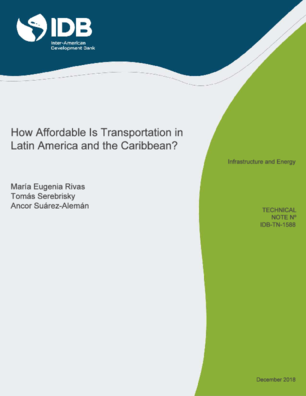How Affordable is Transportation in Latin America and the Caribbean?
Date
Dec 2018
Understanding and recognizing the different transportation conditions and mobility behavior of low-income groups is extremely important for developing and delivering sustainable transportation systems (Lucas et al. 2016). Herein we deepen the understanding of transportation affordability in Latin America and the Caribbean (LAC), with a focus on urban public transportation. The analysis of household expenditure on transportation by expenditure quintile shows that rich households in LAC spent a larger percentage of their expenditure on transportation (17.1 percent) than poorer households (7.7 percent) (Gandelman, Serebrisky, and Suárez-Alemán 2018). Also, as total expenditure increases, expenditure on private transportation increases. Measurement of transportation expenditure may not capture the transportation affordability problem of low-income groups, because fare evasion is higher in deprived areas and poor people may avoid some motorized trips because they are too expensive. We build a transportation affordability indicator and rank cities in accordance to their performance. The results show that the financial burden of a basket of transportation trips for the bottom income quintile exceeds 25 percent in half of the analyzed cities for the 60-trip basket. Transportation subsidies are the most common policy implemented in the region to increase the affordability of transportation, especially for low-income groups. However, their impact in the region has been mixed, showing the need of improving their implementation, particularly in terms of their distributional impacts.




